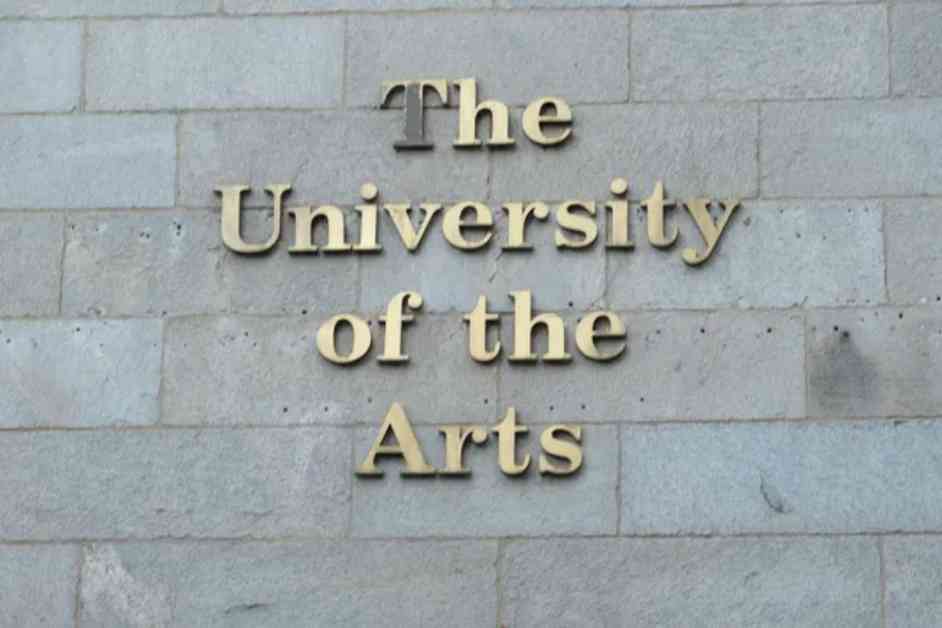University of the Arts in Philadelphia has found itself in hot water with bondholders demanding full repayment of $46 million in bonds following the institution’s abrupt closure in June. The closure of the university led to a cascade of legal and financial challenges, including employees seeking lost wages and a class-action lawsuit alleging violations of federal employment laws.
Bondholders Demand Full Repayment
The University of the Arts is facing pressure from bondholders to repay the full amount of $46 million in outstanding bonds following its closure in June. The bondholders have declared the institution in default on its debt obligations and are demanding full payment. UMB Bank, the trustee of the bonds, sent a notice of default, acceleration, and demand for payment to UArts just two weeks after the university shut its doors. As of the most recent information available, the university has not made the full payment, leading Fitch Ratings to deem the bonds to be in default.
The sudden closure of UArts sent shockwaves through the university community, sparking protests, lawsuits, and investigations at the state and city level. The closure was announced by university leaders who cited “significant, unanticipated expenses” without providing details on what those expenses were. This lack of transparency has raised questions about the financial management of the institution and the circumstances that led to its closure.
Legal Challenges and Employee Rights
In addition to the demands from bondholders, UArts is facing legal challenges from its former employees who allege that the university violated federal employment laws by not providing sufficient notice of job losses. A class-action lawsuit filed by UArts employees seeks 60 days’ worth of wages and other benefits for the affected workers. The lawsuit is ongoing, highlighting the complex legal and financial issues surrounding the university’s closure.
The union representing UArts faculty and staff has also raised concerns about the handling of severance and pay negotiations during the wind-down process. United Academics of Philadelphia issued a statement emphasizing the importance of prioritizing the needs of the affected UArts community members over financial institutions and debtors. The union has called on the university’s board to fulfill its obligations to employees before considering any actions that could jeopardize their rights and financial security.
Financial Challenges and Enrollment Decline
UArts’ financial troubles are further underscored by its operating deficit of $12 million for the fiscal year ending in June 2023. The university’s revenue sources, including tuition and fees, have been declining, with a 11% drop in revenue to $34 million in 2023. This decline in revenue aligns with a long-term trend of decreasing enrollment at UArts, with student headcounts falling by 29% from 2017 to 2022.
The university’s long-term debt, including the bonds at issue with UMB Bank, has been used to finance capital projects on campus, such as building renovations and facility upgrades. The bonds are backed by UArts’ revenue and mortgages on campus buildings, which were appraised at $36 million. The financial challenges facing UArts have raised concerns about the sustainability of its operations and the future of its iconic Philadelphia campus.
The fate of UArts’ campus remains uncertain following reports of possible merger talks with nearby Temple University. However, these talks have stalled due to disputes with major donors, leaving the future of the campus in limbo. Temple University has expressed interest in exploring opportunities with other nonprofit organizations to revitalize and activate UArts’ facilities, signaling a potential shift in the higher education landscape in Philadelphia.
In conclusion, the University of the Arts in Philadelphia is facing a complex web of financial, legal, and operational challenges following its closure in June. The demands from bondholders, legal battles with former employees, and uncertainties surrounding its campus have raised questions about the university’s future and the broader implications for higher education in the region. As the situation continues to unfold, stakeholders will be closely monitoring developments to determine the path forward for UArts and its community.

